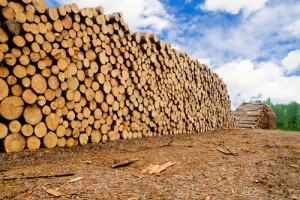 The deadly Washington landslide that struck the community of Oso, 55 miles northeast of Seattle, in March 2014 has renewed longstanding concerns about the consequences of logging in the area. While the slide occurred in weather conditions of heavy rain which typically destabilizes hillsides, the area has also seen substantial clear-cut logging. State and federal investigators are probing this aspect as a possible contributor that may have exacerbated the catastrophe.
The deadly Washington landslide that struck the community of Oso, 55 miles northeast of Seattle, in March 2014 has renewed longstanding concerns about the consequences of logging in the area. While the slide occurred in weather conditions of heavy rain which typically destabilizes hillsides, the area has also seen substantial clear-cut logging. State and federal investigators are probing this aspect as a possible contributor that may have exacerbated the catastrophe.
Lumber continues to be a high-demand renewable resource from forested areas of both Washington and Oregon. Demand is expected to rise as economic conditions recover and new construction revives. The hillside above Oso slopes to the Stillaguamish River is covered with mostly third or fourth-generation timber that was replanted after extensive logging in years past to meet the domestic and foreign lumber demand. The old-growth forest that these replanted trees replaced removed water from the ground at a higher rate than immature new trees that take decades to grow. Increases in ground water caused by man-made forces are one of the known factors in landslides. The north fork reach of the Stillaguamish is known to be naturally geologically unstable, as well.
News accounts questioned whether a logging company may have exceeded the permitted clear-cut boundary. A newly-cut area lies just above the zone of the catastrophic Washington landslide. Cutting a high volume of trees in that vicinity could have allowed excessive amounts of ground water into the hillside during recent heavy rains, contributing to the slide.
A hydrologist employed by local Native American tribes in the area reported that evaluation of the geologic history shows great instability and reveals a pattern of deep-seated landslides, each preceded by forest clear-cutting. Since the 1950s, the area has experienced five incidences of major landslides, all occurring within no more than 10 years of substantial clear-cutting.
To keep builders and contractors abreast of information about current demand for building materials like lumber, Construction Monitor offers up-to-date building permit data derived from user-defined areas. This vital information helps industry professionals identify areas of growth and develop and target sales efforts more effectively.
Image via Shutterstock.com
